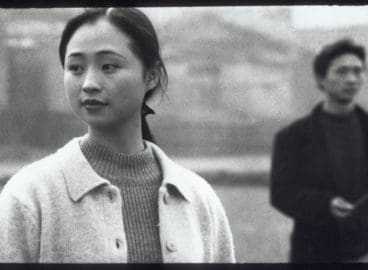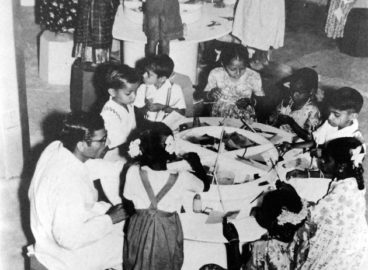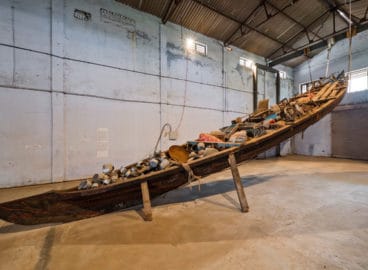In late 2016 and early 2017, a team from The Museum of Modern Art’s C-MAP Asia Group traveled to India and Sri Lanka. We asked the participants to contribute a brief text based on one (or more) of their activities on the trip—a studio, exhibition, or film festival visit, an artwork or architectural site, among other things. Film curator La Frances Hui attended the International Film Festival of Kerala in December 2016. She follows up her visit with this discussion of the award-winning Malayalam feature Sexy Durga by director Sanal Kumar Sasidharan.

Fans of Malayalam and Indian independent films have much to cheer about these days. Sexy Durga (2017), the third feature by Thiruvananthapuram-based director Sanal Kumar Sasidharan, won the International Film Festival Rotterdam’s top honor, the Tiger Award, in January of this year, a first for an Indian film. The film subsequently made its North American premiere at New Directors/New Films, co-presented by The Museum of Modern Art and the Film Society of Lincoln Center. This recognition calls attention not only to an emerging talent, but also to Malayalam and Indian regional cinema.
Sexy Durga is a spine-chilling horror/thriller/road-movie hybrid with a story that unfolds on deserted highways over the course of one evening. A young woman and man, Durga and Kabeer, are running away in the middle of the night. We don’t know why, nor is it ever revealed in the film, but the young couple is obviously desperate, as they try to hitch a ride from any stranger who can take them to the nearest railway station. Their names, one Hindu and the other Muslim, perhaps suggest a prohibited love story but we never find out.
There is nothing especially suggestive or sexy about the way Durga looks: she appears to be an ordinary young woman, like one might see anywhere on the streets of India. However, appearing in the dead of night, hitchhiking with a male companion, she is immediately seen as sexual prey, as the plot inevitably brings to mind the gruesome real-life gang rape that took place in Delhi in 2012, when a young woman was brutally raped and later died from the injuries after she and her male companion boarded a bus. Horror awaits from the very moment Durga and Kabeer get into a van. The driver and his friend waste no time in making a quick and lewd comment about Durga’s body. They continue on, sizing her up and probing intrusively into the couple’s relationship. Throughout the night, the men repeatedly subject them to psychological intimidation, and Durga and Kabeer repeatedly plead to be dropped off. For more than an hour, we sit inside the claustrophobic van with Durga and Kabeer, fearing the worst.

Director Sasidharan intercuts this nightmarish fictional road trip with documentary footage of a temple celebration in honor of the goddess Durga. While women are seen as spectators on the periphery, men, in a ritualistic procession, walk barefoot over burning charcoal and suspend themselves by metal hooks that pierce their skin. These forms of self-flagellation, acts of sacrifice to the goddess, offer an intriguing and complex juxtaposition to the terror of Durga’s experiences. Such a provocative work examines sexual violence and misogyny in Indian society today and all the contradictions between beliefs and daily life. The suspense that keeps us on edge also challenges us to question our own fears and prejudices, as we make quick judgments during the course of the film, in considering the danger the couple faces.

In a film industry dominated by commercial fare, mostly in Hindi, Tamil, and Telugu languages, the international recognition of this Malayalam film, a low-budget indie work without glamorous stars, is exceptionally exciting. There is, in fact, a cinema culture thriving across India, an enormously diverse country in which many different languages are spoken. The International Film Festival of Kerala, for example, which screened Sasidharan’s previous works, has become one of the most successful festivals in India. Held each year in Thiruvananthapuram, Kerala’s capital, it has drawn renowned international participants, including Werner Herzog, Kim Ki-duk, and Apichatpong Weerasethakul. The festival has also consistently provided a platform for Malayalam and independent films from all over India. Its twenty-first edition, which took place over eight days in December, showcased close to two hundred films from more than sixty countries for an audience of thirteen thousand. Challenges, universal to say the least, continue to exist for filmmakers seeking resources and a sustainable market for their films, but for the moment we welcome the surge of creativity and audience enthusiasm.


